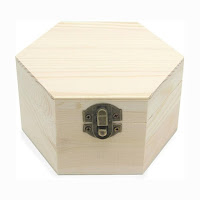JWJarts - Encouraging Beginners
Hoping to inspire and encourage those interested in drawing or painting to have-a-go.
Friday, 19 September 2025
Puppy with Snow on his face
Sunday, 31 August 2025
Pelican
I came across this chap in 2016 at Birdland in Bourton-on-the-Water, a small picturesque town in the English Cotswolds. We've been to Birdland 2 or 3 times now and we see something different every time we go. This chappy was flying when I first spotted him but by the time I'd readied myself for a photo, he had splashed down - literally.
Sunday, 10 August 2025
ROKR racing car
I have been aware of ROKR wooden models for a long time. I've seen them on display in shops and online stores and always marvelled at their original olde-worlde style. Steam engines, Marble alleys, working clocks, Carousels, Musical instruments .... the list is endless. But it was Christmas 2024 that I finally got to find out for myself just how superb these 3D wooden models really are.
Lucky me received from Santa my very first ROKR model. I say "very first" because I'm determined that there will be many more in the future. My first ever ROKR model is of a Formula One Racing Car - and to my amazement, it actually works.
 |
| Car under construction |
What IS outstanding is the degree of accuracy in these kits. The wooden elements fit together with such precision that glue isn't necessary yet the wheels rotate and steer and the clockwork motor drives the car forward. The pieces are well labelled and press out of the wooden sheet easily, and clear instructions show exactly where each piece is to be positioned. In addition, some more complex pieces are duplicated in case of breakage during construction. These kits just ooze quality.
Though the skill level for building these models is fairly basic, the level of self-satisfaction from watching a 3D model develop step-by-step is immense. I certainly know what will be at the top of my future birthday and Christmas present lists.
Tuesday, 5 August 2025
Rowing Boat
 |
| Pen & Wash of an old broken Rowing boat |
Friday, 18 July 2025
Hexagonal box
Obviously, work on the box began with the removal of the hinges and catch. To help with the positioning of the pieces I marked out the lid of the box and the next job was to cut 18 triangles, each with a 20 degree angle.
These veneers are extremely thin and it's very easy to break them while cutting due to the blade catching in the grain. One way I've discovered to reduce the instance of splitting is to stick masking tape on one side of the veneer. It also helps in that I can make pencil marks, etc, on the masking tape rather than on the veneer itself.
I decided to cut opposite triangles from the same veneer and the work I put into selecting and arranging the veneers at the outset is now paying off. Obviously, at this stage, I could easily swap veneers around again but I don't see the need as I'm quite happy with the scheme as it is.
The box was sanded using varying grades of sandpaper and the surface was cleaned with a tack cloth to remove the fine particles of dust trapped in the grain. I applied a couple of coats of Shellac Sanding Sealer which fills the pores and grain of the wood. This process was repeated a couple of times, sanding between each coat with extremely fine sandpaper, until I felt it was ready for varnishing.
Every time I've done some marquetry I've finished off with a different varnish, polish or process because I've never been completely satisfied with the result. I've been aiming for a high gloss finish that doesn't yellow the wood. I think with the above process and products I've finally found a result I'm happy with.
Thursday, 10 July 2025
Lion in Ink
The drawing was produced entirely with a very fine (0.05) UniPin Fineliner. I wanted to use the thinnest nib so that I had more control over the tonal values. It made for an awful lot of mark making in the darkest areas but working the darks in slowly was always the plan. When working with ink we can't add texture marks without adding dark marks, and getting that balance right was paramount. I thoroughly enjoyed this one.
Wednesday, 25 June 2025
Vintage Petrol Pump
Monday, 23 June 2025
A faithful servant
Saturday, 14 June 2025
Lakeside Cottage
As can be seen, I opted to define the contours with fine hatching lines with the occasional blade of grass here and there. It worked to an extent but I can't say I'm especially happy with the effect.














